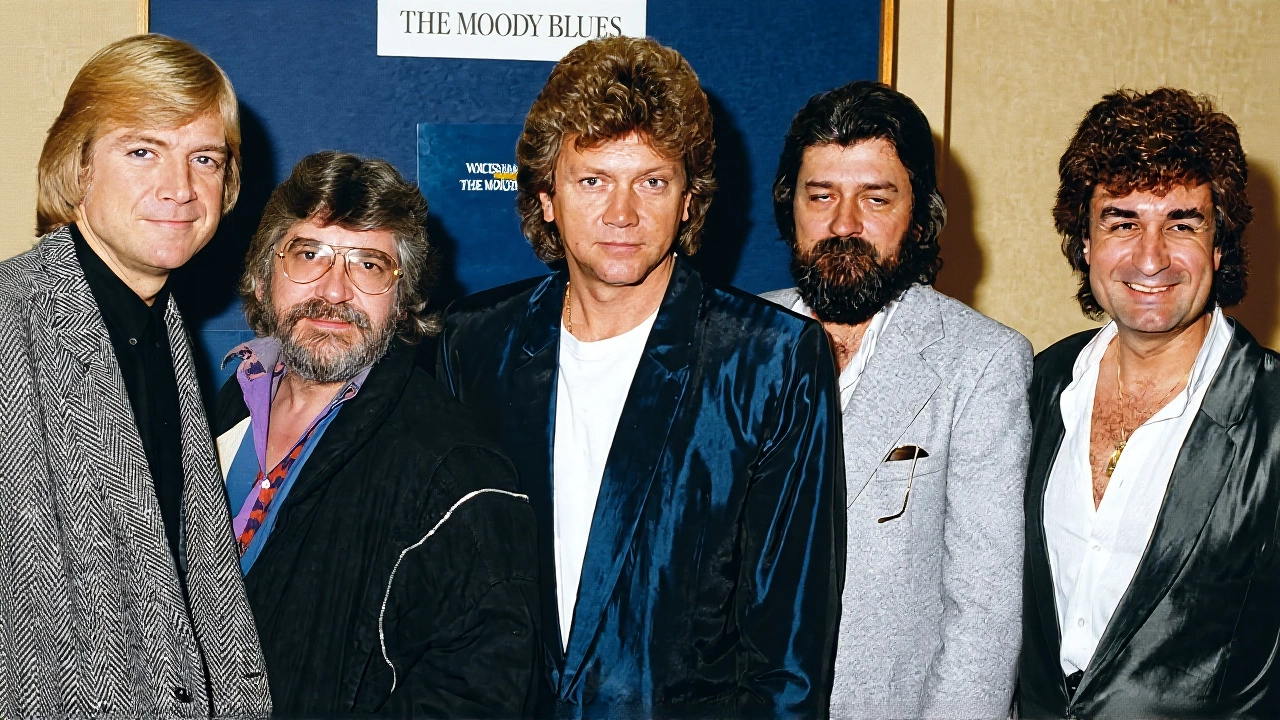
Moody Blues’ ‘Long Distance Voyager’ Revives Stardom After Line‑up Shake‑up
The Moody Blues' 1981 album 'Long Distance Voyager' hit #1 in the US, delivered two Top‑20 singles, and marked a successful comeback after lineup changes.
When talking about Justin Hayward, the English singer‑songwriter best known as the lead vocalist and guitarist for The Moody Blues, also known as Justin Peter Hayward, you’re stepping into a career that spans over five decades. Hayward first joined the band in 1966, bringing a melodic voice and crisp guitar tone that helped shape classic tracks such as “Nights in White Satin,” “Your Wildest Dreams,” and “Tuesday Afternoon.” His songwriting combines lyrical romance with lush orchestration, a blend that turned the group into one of the era’s most recognizable names. The impact of his work isn’t limited to chart success; it set a template for melodic progressive rock that still echoes in today’s music.
The Moody Blues, a British progressive rock band formed in Birmingham in 1964, The Moody Blues became a vehicle for Hayward’s artistic vision. Their 1967 album *Days of Future Passed* merged rock with orchestral arrangements, a pioneering move that earned them a place at the forefront of the psychedelic and progressive movements. Songs like Nights in White Satin, a ballad renowned for its haunting strings and emotional vocal delivery exemplify how Hayward’s lyrical sensibility paired with the band’s symphonic ambition. The track topped charts worldwide and still finds airplay on classic‑rock stations, proving that a well‑crafted melody can outlive trends. Beyond The Moody Blues, Hayward’s influence stretches across the broader progressive rock, a genre that blends rock instrumentation with experimental structures and conceptual themes landscape. His guitar work—characterized by clean, sustained notes and tasteful bends—became a reference point for guitarists seeking to balance technical skill with emotional expression. Meanwhile, his vocal style, warm yet powerful, helped define the British rock vocal aesthetic of the late‑60s and early‑70s. Musicians from Pink Floyd to modern indie acts credit Hayward’s approach as a key inspiration for crafting songs that feel both intimate and epic. Hayward also proved adaptable. In the 1980s, he embraced synth‑driven production on albums like *The Other Side of Life*, showing that even established artists can evolve without abandoning their core sound. His solo projects, such as *Blue Jays* (a collaboration with fellow Moody Blues member John Lodge), explore acoustic textures and storytelling that feel fresh yet familiar. Across every phase—psychedelic, arena rock, and adult‑contemporary—Hayward maintained a commitment to melody first, a principle that keeps his catalog relevant and approachable for new listeners. If you’re curious about how a single musician can influence an entire genre, Hayward’s career offers a clear roadmap. He demonstrates that strong songwriting, willingness to experiment, and consistent performance quality create a lasting legacy. Below you’ll find a curated selection of articles that dig into his early days, dissect iconic tracks, explore his solo ventures, and examine his impact on modern rock. Whether you’re a longtime fan or just discovering his name, these pieces give you the context you need to appreciate why Justin Hayward remains a touchstone in British music history.

The Moody Blues' 1981 album 'Long Distance Voyager' hit #1 in the US, delivered two Top‑20 singles, and marked a successful comeback after lineup changes.